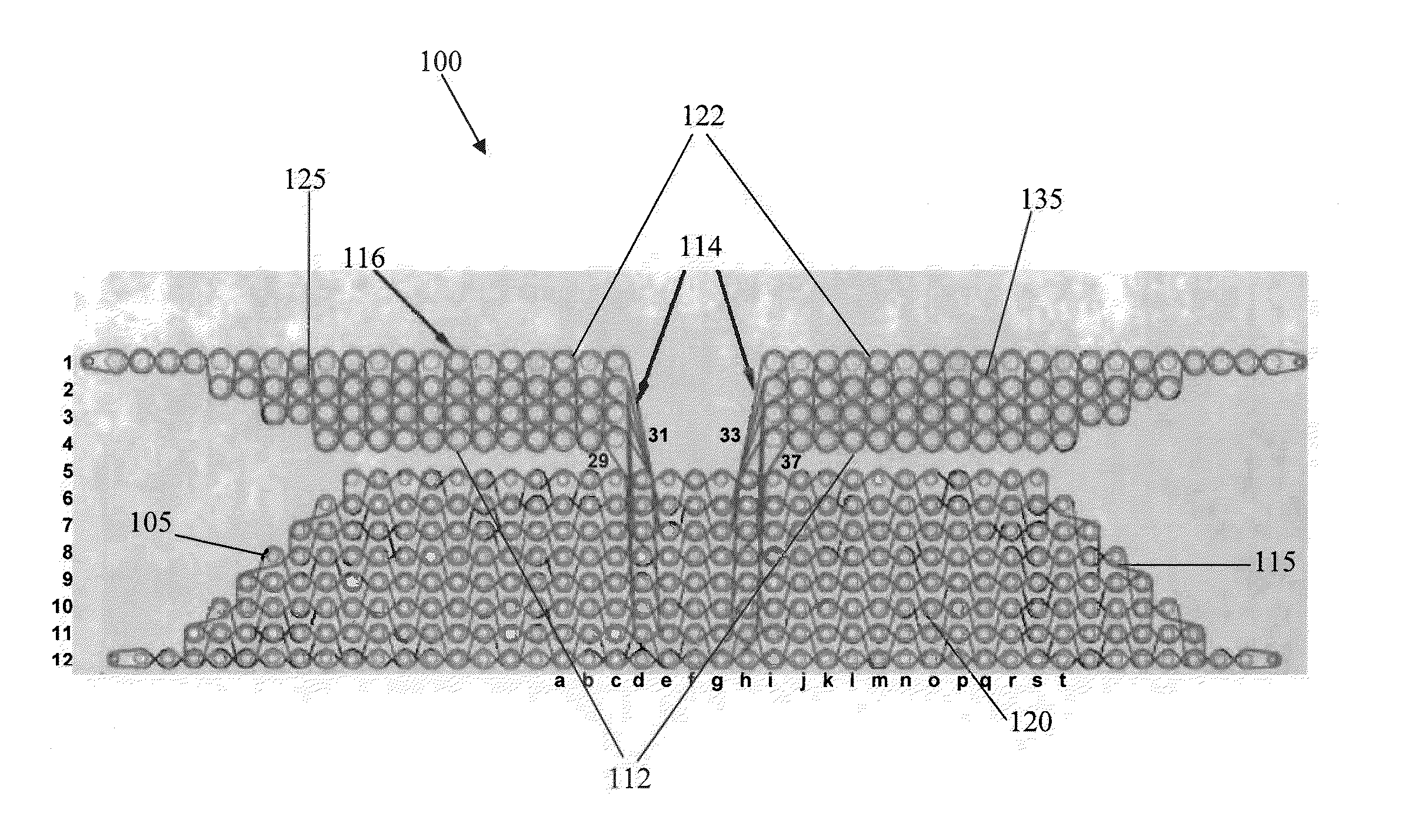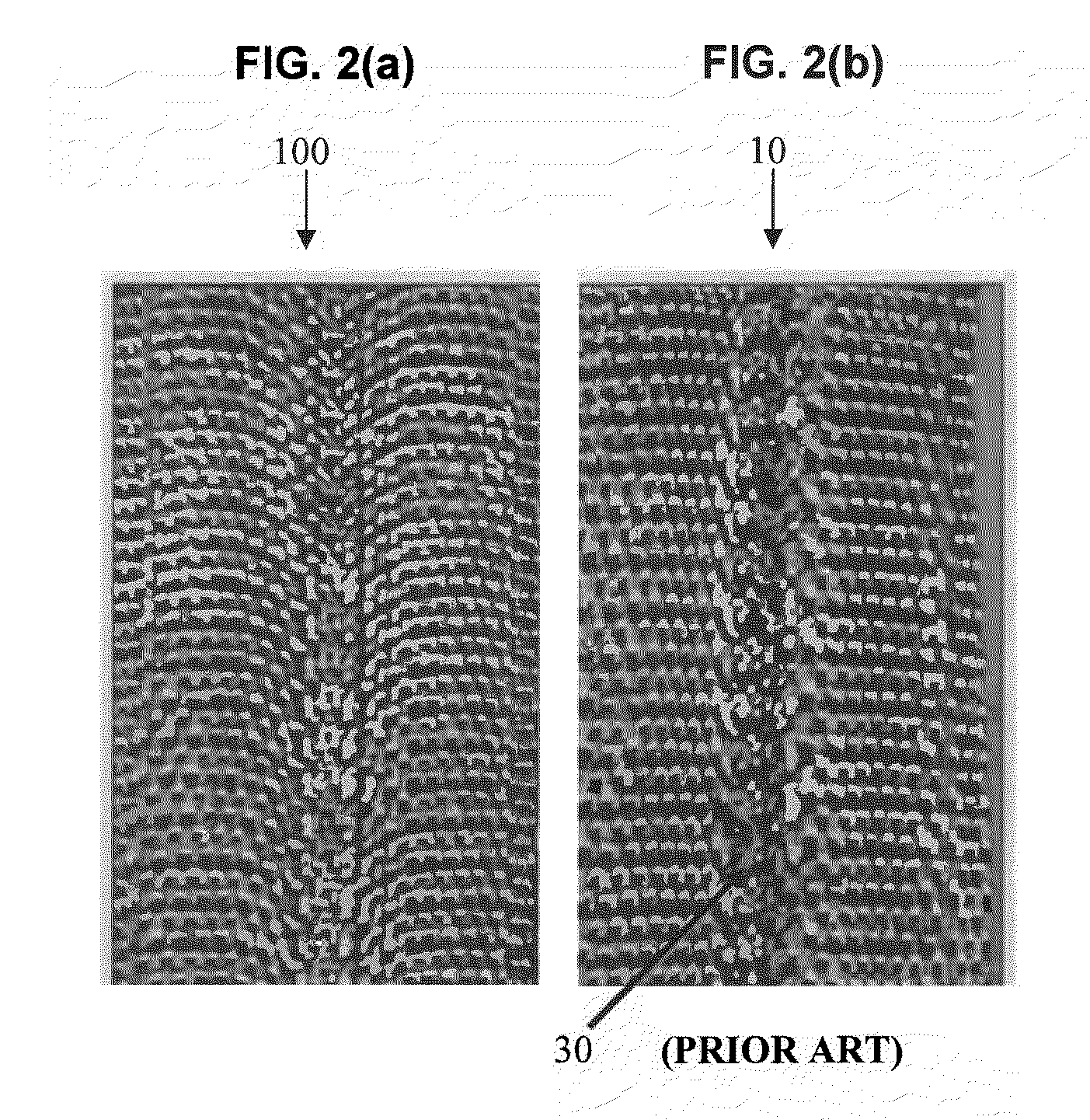Pi-preform with variable width clevis
a clevis and variable technology, applied in the field of woven preforms, can solve the problems of inability to use metal bolts or rivets at the interface of such components, and inability to meet the requirements of weaving, etc., to achieve the effect of reducing weaving time, improving quality, and eliminating loop formation
- Summary
- Abstract
- Description
- Claims
- Application Information
AI Technical Summary
Benefits of technology
Problems solved by technology
Method used
Image
Examples
Embodiment Construction
[0041]FIGS. 1, 2a, 3 and 4 illustrate a preferred embodiment of a three-dimensional preform 100. Preform 100 is formed by weaving one or more fill fibers 114 in a pattern through a plurality of warp fibers 116 which extend perpendicularly to the plane of the pattern. In FIGS. 1 and 3, the complete pattern used to form Pi-shaped preform 100 is illustrated, where fill fibers 114 are shown in the viewing plane, whereas warp fibers 116 are shown as perpendicular to the viewing plane. Fibers 114, 116 are shown as spaced apart in the schematic views of the architecture, though fibers 114, 116 are compacted together when actually woven into a completed preform 100.
[0042]Turning now to FIG. 1, all warp fibers 116 in preform 100 are generally parallel to each other, with slight undulations along the longitudinal length of each fiber 116, and are arranged in generally vertical columns. Preform 100 is preferably woven from materials used for typical composite structures, for example, fiberglas...
PUM
| Property | Measurement | Unit |
|---|---|---|
| width | aaaaa | aaaaa |
| length | aaaaa | aaaaa |
| symmetry | aaaaa | aaaaa |
Abstract
Description
Claims
Application Information
 Login to View More
Login to View More - R&D
- Intellectual Property
- Life Sciences
- Materials
- Tech Scout
- Unparalleled Data Quality
- Higher Quality Content
- 60% Fewer Hallucinations
Browse by: Latest US Patents, China's latest patents, Technical Efficacy Thesaurus, Application Domain, Technology Topic, Popular Technical Reports.
© 2025 PatSnap. All rights reserved.Legal|Privacy policy|Modern Slavery Act Transparency Statement|Sitemap|About US| Contact US: help@patsnap.com



